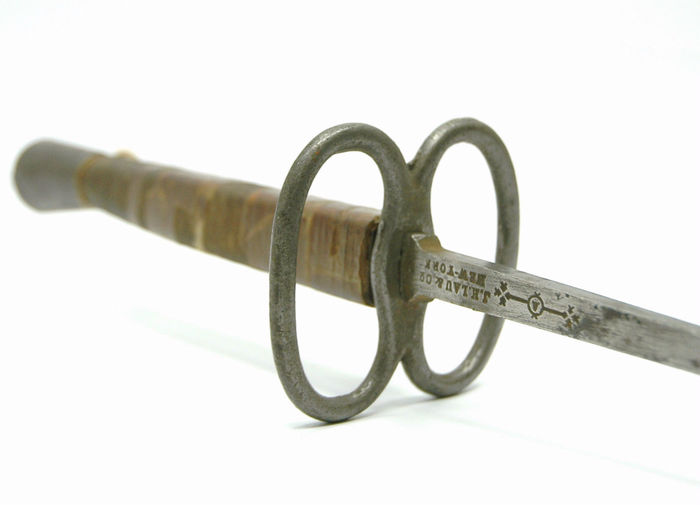I want to mount a new blade and furnish it with the historical hilt pieces. Yet there is a technicality that I would like to resolve before beginning on the project. Most historical examples of this type that are in good shape have a piece of leather (or sometimes of felt or another organic material) as a companion to the very open "figure 8" guard.,which really is barely a guard at all.
However, some examples have the leather on the outside of the guard, such as this one :http://img1.etsystatic.com/004/0/6144597/il_5...7_9ksi.jpg
Others have it on the inside, like this : http://p2.la-img.com/1605/38045/16193700_3_l.jpg
Why is there a variation? It would seem that the leather on the outside of the guard would deflect the sword point much better and prevent it from getting caught, yet many of the examples I see have the leather on the inside, which does look aesthetically more logical.
Also, the way the leather is held in place is not clear to me . If it is sandwiched in as part of the peened assembly, then I would think the compression of the leather would cause everything to eventually be loose. Yet if the leather isn't held on with the rest of the sword, how is it attached?
Hopefully some members here may have some knowledge about this , or own an example . If not, I understand that it is indeed an obscure question. Thanks !
